Small Septic Tank for One Toilet- with Price Guide
 |
| small septic tank for one toilet |
Did you know that installing a small septic system for one toilet is a practical solution for homes in rural areas or those unable to connect to public sewer systems?
With tank sizes ranging from 1,000 gallons or more, the cost of installation depends on the extent of work required, including permits and percolation tests.
However, the benefits of a small septic tank, such as low maintenance, minimal environmental impact, and independence from public sewer systems, make it a worthwhile investment.
In this article, we will explore everything you need to know about installing a small septic system for one toilet, including tank size requirements, materials, permits, and maintenance.
Key Takeaways
- Common septic tank materials for small septic systems include concrete, polyethylene, and fiberglass.
- The cost of installing a small septic tank for one toilet can range from $2,900 to $18,600, depending on the tank size and installation work.
- One-toilet septic systems are suitable for secluded or sectioned-off homes with one bathroom or one to two occupants.
- Regular maintenance and pumping are necessary for long-term cost savings and to extend the lifespan of the septic system.
Septic Tank Size Requirements
Local laws and regulations dictate the minimum size requirements for septic tanks, so it is important to check these requirements before installing a small septic system for one toilet.
When it comes to septic tank installation, it is highly recommended to hire professionals for the job. Professional septic tank installation offers several advantages.
Firstly, professionals have the expertise and knowledge to ensure that the installation process is done correctly and efficiently. They are familiar with local building permits and percolation test requirements, ensuring compliance with regulations.
Additionally, professionals can help determine the appropriate size of the septic tank based on the number of occupants and usage requirements. This ensures that the septic system functions properly and efficiently.
Overall, hiring professionals for septic tank installation can save time, money, and potential headaches in the long run.
Choosing the Right Septic Tank Material
Concrete, polyethylene, and fiberglass are common materials used for septic tanks. When choosing alternative materials for a septic tank installation, it is important to consider factors such as durability, cost, and ease of installation.
Concrete septic tanks are known for their strength and longevity, but they can be more expensive and require professional installation.
Polyethylene tanks are lightweight, easy to install, and resistant to corrosion, making them a popular choice.
Fiberglass tanks offer similar benefits to polyethylene tanks and are also resistant to corrosion.
During the septic tank installation process, it is crucial to follow local building codes and regulations. This includes obtaining any necessary permits and conducting a percolation test to determine the suitability of the soil for drainage.
Understanding Local Building Permits
Obtaining the necessary building permits is crucial when installing a septic tank. Understanding local regulations and obtaining building permits ensures that the installation process is in compliance with the law. Here are four key points to consider regarding building permits for septic tank installation:
Local regulations: Familiarize yourself with the specific regulations and requirements set by your local government regarding septic tank installation. This includes any permits needed and the process for obtaining them.
Permit application: Once you understand the local regulations, submit the necessary permit application to the appropriate department. This may require providing detailed plans and documentation of the proposed septic system.
Timeframe: It is important to note that obtaining building permits can take time. Allow for sufficient time for the application to be reviewed and approved before starting the installation process.
Compliance inspections: After obtaining the building permits, expect compliance inspections throughout the installation process. These inspections ensure that the septic system is being installed according to the approved plans and local regulations.
Conducting a Percolation Test
Conducting a percolation test determines the soil's ability to absorb liquid waste from a septic tank. This test is crucial in determining whether the soil is suitable for installing a septic system.
The percolation test procedure involves digging test holes in the area where the drainage field will be located. These holes are filled with water and the time it takes for the water to percolate into the soil is measured. This gives an indication of how well the soil can absorb the liquid waste.
If the soil fails the percolation test, alternative options may need to be considered. One alternative is to install a mound system, which involves building an elevated mound of soil to improve the absorption capacity. Another alternative is to use an aerobic treatment unit, which treats the liquid waste before it is released into the soil.
These alternatives can be discussed with a septic system professional to determine the best solution for the specific site.
Cost Considerations for Small Septic Systems
The cost of a septic system is influenced by factors such as the size of the tank, installation work, permits, percolation tests, excavation, piping, and landscaping.
When considering the installation of a small septic system for one toilet, it is important to take into account the cost considerations. Here is a breakdown of the key factors:
Size of the tank: The size of the tank will determine the overall cost of the system. Smaller tanks are generally less expensive than larger ones.
Installation work: The complexity of the installation work can affect the cost. Factors such as the accessibility of the site and the distance from the toilet to the tank can impact the overall cost.
Permits and percolation tests: Before installing a septic system, permits and percolation tests may be required. These additional costs should be considered in the overall budget.
Excavation, piping, and landscaping: The cost of excavation, piping, and landscaping can vary depending on the specific requirements of the site. These factors should be taken into account when determining the overall cost of the system.
Overall, the cost of installing a small septic system for one toilet can vary depending on these factors. It is important to consult with professionals and obtain multiple quotes to ensure an accurate estimate of the total cost.
Hiring Professionals for Septic System Installation
Professionals are best suited for the installation of a septic system. Hiring professionals for septic system installation ensures that the job is done correctly and efficiently.
Septic systems are complex and require specialized knowledge and equipment. Professionals have the expertise to navigate local regulations and obtain the necessary permits. They also have the experience to properly assess the site, determine the appropriate size and type of septic tank, and install it according to industry standards.
Additionally, professionals have the skills to handle any challenges that may arise during installation, such as difficult soil conditions or site restrictions. Overall, hiring professionals for septic system installation provides peace of mind and ensures a properly functioning system for years to come.
Benefits of a One-Toilet Septic System
A one-toilet septic system offers convenience and cost savings for homes with limited occupancy or a single bathroom. The benefits of a one-toilet septic system include:
Lower Cost: Installing a smaller septic tank can be more affordable compared to larger systems. It requires less excavation, piping, and landscaping, resulting in cost savings.
Reduced Maintenance: One-toilet septic systems have lower maintenance requirements compared to traditional outhouses. Regular maintenance and pumping are necessary, but the frequency is lower, leading to long-term cost savings.
Environmental Impact: These systems minimize the environmental impact by reducing land destruction and lowering the chances of leakages. They also require less piping than public sewer systems, further reducing their ecological footprint.
Independence: Having a one-toilet septic system means avoiding the need to connect to public sewer systems. This provides homeowners with independence and flexibility in managing their waste disposal.
With these benefits, a one-toilet septic system can be a practical choice for homes with limited occupancy or a single bathroom, offering convenience and cost savings.
Ideal Applications for One-Toilet Septic Systems
Homes with limited occupancy or a single bathroom can benefit from the convenience and cost savings offered by a one-toilet septic system. These systems are ideal for remote locations where connecting to a public sewer system is not feasible. The installation process involves several steps, including obtaining building permits and conducting percolation tests to ensure proper drainage. A professional should handle the installation to ensure it is done correctly.
Ideal Applications for One-Toilet Septic Systems
- Secluded Homes
- Benefit: Convenience
- Cabins
- Benefit: Cost savings
- Recreational Vehicles
- Benefit: Environmental impact minimization
These bullet points summarize the best scenarios and associated benefits for using one-toilet septic systems.
These systems require regular maintenance and pumping to ensure they last up to 30 years. They also have lower environmental impact compared to traditional outhouses and require less piping than public sewer systems. Overall, one-toilet septic systems provide independence and cost savings, making them a great choice for homes in remote locations.
Why Rural Homes Require Septic Systems
Rural areas lack access to public sewer systems, necessitating the use of septic systems for waste disposal in these locations. Installing a septic system is a cost-effective solution for rural homes, providing independence from public sewer systems.
Here are four reasons why rural homes require septic systems:
Lack of access: Rural areas do not have the infrastructure to connect to public sewer systems, making septic systems the only viable option for waste disposal.
Cost-effective: Septic systems are more affordable compared to the expenses of installing and maintaining a public sewer system in remote areas.
Environmental impact: Septic systems minimize land destruction and reduce the chances of leakages, making them an environmentally friendly choice for waste disposal.
Independence: Having a septic system allows rural homeowners to avoid the need for connecting to public sewer systems, providing them with greater control and autonomy over their waste management.
Determining the Right Size for Your Septic System
Determining the right size for their septic system can be a crucial decision for homeowners in rural areas. When installing a small septic system for just one toilet, it is important to consider the size of the septic tank and the extent of the installation work.
The cost of septic system installation can vary depending on the size of the tank and the specific requirements of the project. On average, small septic tank installation costs range from $2,900 to $18,600. However, it is worth noting that additional expenses such as permits, percolation tests, excavation, piping, and landscaping should also be taken into account.
Regular maintenance and pumping are necessary for long-term cost savings and to ensure the proper functioning of the septic system. Homeowners should be aware of the importance of septic tank maintenance to avoid any potential issues in the future.
The Functioning of a Septic System
The bacteria in the septic tank break down solid waste into scum, partially clear water, and sludge layers.
Regular Septic Maintenance: Regular maintenance is crucial to keep the septic system functioning properly. This includes regular pumping to remove accumulated solids and prevent blockages. It is also important to inspect the tank and pipes for any signs of damage or leaks.
Troubleshooting Common Septic System Issues: Some common issues that can arise with septic systems include clogs, backups, and foul odors. These issues can be caused by a variety of factors such as excessive water usage, improper disposal of non-biodegradable waste, or a malfunctioning pump. It is important to address these issues promptly to prevent further damage to the system.
Proper care and maintenance of a septic system are essential to ensure its longevity and prevent costly repairs. Regular pumping, inspections, and addressing any issues promptly are key to keeping the system functioning properly.
The Role of Bacteria in Waste Breakdown
Bacteria play a crucial role in breaking down waste in the septic tank. These microscopic organisms are responsible for the decomposition of organic matter, such as human waste and toilet paper, into simpler substances. They thrive in the oxygen-depleted environment of the septic tank, where they break down the solid waste, or sludge, into liquid form.
This liquefied waste then flows through underground pipes to a septic tank drainage field, where further filtration and natural processes occur. The role of bacteria in waste breakdown is essential for the proper functioning of a septic system. They help prevent the accumulation of solid waste, which can lead to clogs and system failures.
Additionally, the benefits of bacteria in septic systems include low maintenance, minimized environmental impact, and the avoidance of connecting to public sewer systems, providing homeowners with independence.
Understanding the Septic Tank Drainage Field
Liquified waste from the septic tank flows through underground pipes to a septic tank drainage field, where further filtration and natural processes occur.
Understanding the Septic Tank Drainage Field:
Purpose: The drainage field serves as the final stage in the septic system, where treated wastewater is distributed into the soil.
Function: The soil in the drainage field acts as a natural filter, removing any remaining impurities and pathogens from the wastewater.
Maintenance: Regular maintenance of the drainage field is crucial to ensure its proper functioning. This includes monitoring water usage, avoiding excessive water flow, and regular inspections for signs of failure.
Environmental Impact Assessment: The drainage field plays a significant role in minimizing the environmental impact of the septic system. It helps prevent contamination of groundwater and nearby water bodies, reducing the risk of pollution.
Proper drainage field maintenance and regular environmental impact assessments are essential to ensure the continued functionality and sustainability of the septic system.
Maintaining and Pumping Your Septic System
Regular maintenance and pumping of a septic system is necessary to ensure its proper functioning and prevent costly repairs. Septic system maintenance includes regular inspections, cleaning of filters, and monitoring of the tank's water levels.
It is recommended to have a septic tank pumped every three to five years, depending on the household size and water usage. The frequency may increase if there are more occupants or if excessive water usage occurs. Pumping the septic tank removes accumulated solids and helps prevent blockages and backups. It also allows for the inspection of the tank's condition and identifies any potential issues before they become major problems.
Longevity and Cost Savings of Small Septic Tanks
After understanding the importance of maintaining and pumping a septic system, it is essential to consider the longevity and cost savings associated with small septic tanks. These tanks offer several advantages, including cost-effective maintenance and environmental benefits.
Extended lifespan: With proper maintenance, a small septic tank can last up to 30 years. Regular pumping and inspection ensure its optimal functionality and prevent costly repairs.
Cost-effective maintenance: Compared to traditional outhouses, small septic tanks require low maintenance. This means fewer expenses on repairs and replacements, resulting in long-term cost savings.
Environmental benefits: Small septic tanks minimize the environmental impact by reducing land destruction and lowering the chances of leakages. They also require less piping than public sewer systems, making them an eco-friendly choice.
Independence: By installing a small septic tank, homeowners can avoid the need for connecting to public sewer systems, providing them with a sense of independence.
Overall, opting for a small septic tank brings both financial and environmental advantages, making it a smart choice for homeowners.
Frequently Asked Questions
How Often Should a Small Septic System for One Toilet Be Pumped?
A small septic system for one toilet should be pumped every 3-5 years to ensure proper functioning. Regular pumping frequency is essential for septic tank maintenance and to prevent overflow and potential damage to the system.
What Are Some Common Signs That Indicate a Septic System Needs Maintenance?
Regular septic system maintenance is crucial. Signs of needed maintenance include slow drains, foul odors, and pooling water. Neglecting maintenance can lead to costly repairs and environmental damage. Don't overlook the importance of regular septic system maintenance.
Are There Any Specific Regulations Regarding the Location of a Septic Tank Drainage Field?
Specific regulations for septic tank drainage field locations vary by jurisdiction. It is important to consult local authorities to ensure compliance. Regular septic system maintenance, including pumping and inspections, is crucial for optimal performance and longevity.
Can a Small Septic System Be Expanded to Accommodate Additional Bathrooms in the Future?
A small septic system cannot be expanded to accommodate additional bathrooms in the future. It is designed specifically for one toilet and is not large enough to handle the increased wastewater from additional bathrooms.
Are There Any Alternative Options to Septic Systems for Rural Homes Without Access to Public Sewer Systems?
Alternative options for rural homes without access to public sewer systems include composting toilets, incinerating toilets, and greywater systems. These options have different pros and cons, and cost comparisons should be done to determine the best fit for specific needs.
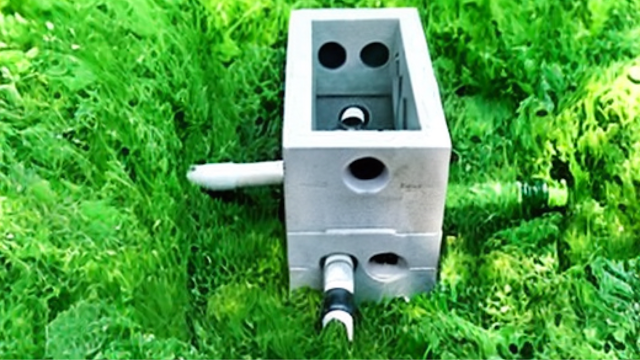

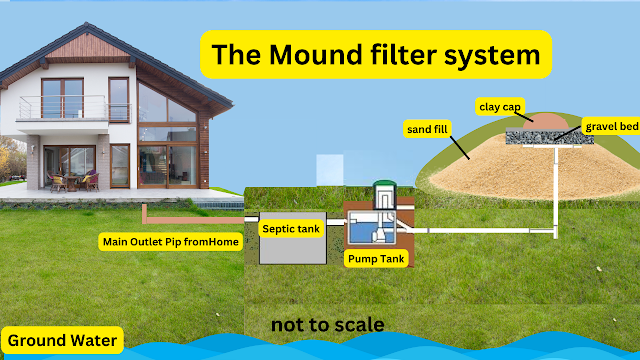
.png)

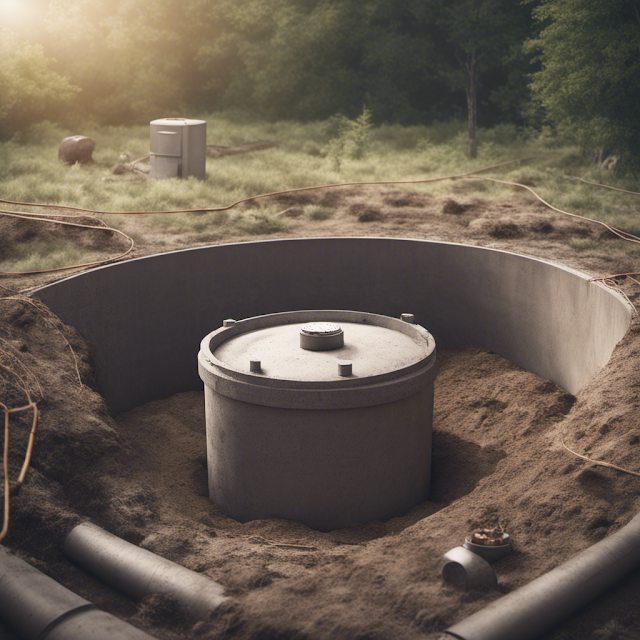
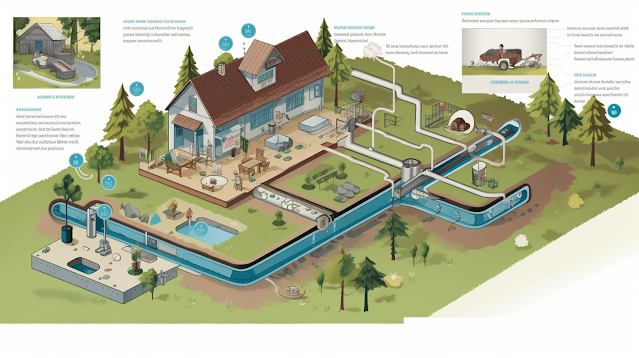
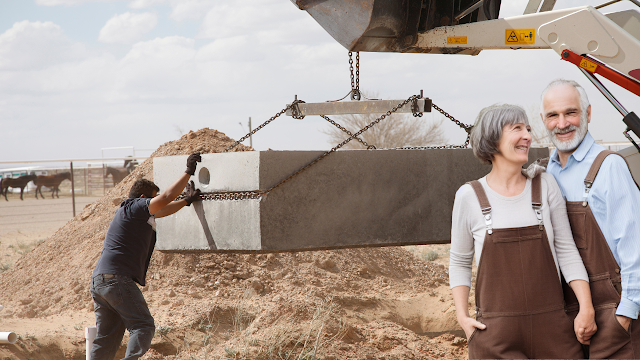


Comments
Post a Comment